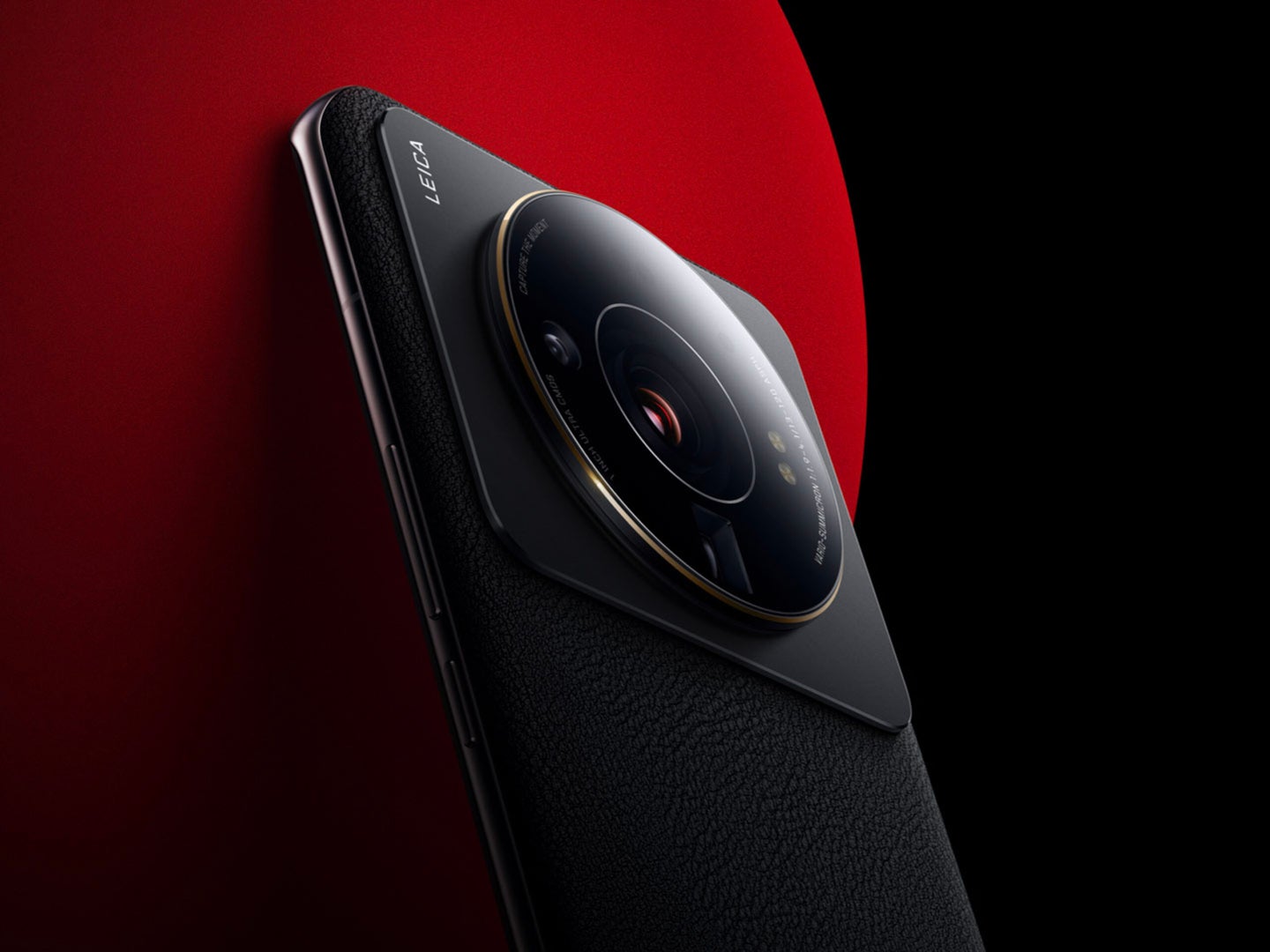The new Xiaomi x Leica smartphone has the world’s largest camera sensor
The ascendant Chinese smartphone maker partnered with Sony for the new chip and worked with Leica to engineer the lens.

Meet the new Xiaomi 12S Ultra, a flagship smartphone co-developed with Leica. It pairs a brand-new and (by smartphone standards) absolutely huge, 50-megapixel, image-stabilized, one-inch sensor with a Leica Summicron 23mm f/1.9 ASPH main lens, alongside a duo of smaller-sensor ultra-wide and telephoto cameras.
Related: Best camera phones
Xiaomi debuts its Leica partnership & Sony collaboration
Xiaomi is clearly determined to capitalize on its newfound Leica partnership, which it was able to poach from one-time rival Huawei earlier this year. It’s equally adamant that this is more than just a branding exercise, referring to Leica as having “co-developed” all three rear-facing lenses and “co-engineered” the imaging profiles for a Leica-approved aesthetic. It further says it not only applies Leica’s “stringent optical quality testing standards,” but also uses its “world-class optical design capabilities.”

Related: 200MP Samsung sensor used for giant cat print
The new phone also debuts a tighter partnership between Xiaomi and the dominant sensor supplier Sony, which, as we’ve mentioned recently, controls 40% of the entire CMOS image sensor market. Xiaomi CEO Lei Jun has stated on the Chinese social networking site, Weibo that his company both helped Sony to define the basic specification and participated in the actual design process. He has also revealed that the two companies split the $15 million development cost equally in exchange for Xiaomi having first-out-of-the-gate rights in its home market.
What Xiaomi doesn’t have, however, is a global exclusive. It turns out that the Sony IMX989 sensor featured in the 12S Ultra is the same chip that’s already available in the Japanese-market Sharp Aquos R7, which went on sale just this month. Admittedly, though, the Sharp isn’t using quite the entire sensor area, but rather pixel-binning the centermost 47.2 megapixels. (Pixel binning is the process of grouping pixels together during image capture.) Still, that should be near-indistinguishable from the full 50 megapixels in real-world use.
The main camera is the really big news, pun intended

The main camera’s one-inch sensor is the big news here, and it’s considerably larger than the sensors found in most other flagship smartphones. Compared to the iPhone 13 Pro’s 1/1.65-inch main camera sensor, the 12S Ultra’s is roughly 2.5x the surface area, which should result in some noticeable image quality advantages. (The initial samples, below, are pretty darn impressive).
The sensor makes use of a Quad-Bayer pixel array, which bins information from four adjacent pixels to reduce noise, increase dynamic range, and improve lowlight performance. It also sports on-sensor phase detect autofocus, which works in tandem with the camera’s laser AF.
According to Xiaomi, the main camera has an eight-element lens, and while it doesn’t provide counts for individual types, these include both aspheric elements and elements which have been edge-blackened to prevent stray light. Anti-glare and hydrophobic/oleophobic coatings are also used, and there’s a spin-coated infrared cut filter too.
More on the smaller sensor wide and tele cameras

As well as the aforementioned 50-megapixel, 1-inch IMX989 camera, the Xiaomi also has two 48-megapixel cameras, each of which sits in front of a 1/2-inch Sony IMX586 sensor. These sensors are just a smidgen over a quarter of the surface area of the main camera’s sensor. And unlike the main camera’s phase detect AF, these cameras use Dual Pixel AF.
Both lenses are also Leica Summicron ASPH-branded, with the ultra-wide optic being a 13mm f/2.2 macro lens and the telephoto camera being a periscopic 120mm f/4.1. The latter has optical image stabilization, which should be helpful when shooting both stills and video. The front-facing camera offers 32-megapixels of resolution.
This isn’t a camera bump, it’s a camera dinner plate!

If all of this has your curiosity piqued, now is the time to temper your expectations just a little, aesthetically at least. Nearly the entire top third of the phone’s rear surface is dominated by an absolutely colossal, dual-level camera bump.
The lower of these two levels is rectangular and occupies almost the full width of the phone. Atop it, a circular panel protrudes wedding cake-style, almost its entire surface clad in glass to give the appearance of a “lens.” In fact, it’s housing for no less than three full camera/lens combos, as well as what we’re presuming is a twin-LED flash strobe.
The Leica partnership extends to software, too
As well as its work on the lens front, Leica is said to have participated in creating the tone curves and profiles necessary to deliver a “look” representative of the company’s own aesthetic.
The “Leica Authentic” profile is appearing in a smartphone for the first time and is said to yield a natural look with contrast in shadows and highlights, plus “a good sense of three-dimensionality.” The “Leica Vibrant” profile, meanwhile, seeks a middle ground between Leica’s favored aesthetic and that of Xiaomi’s. You can see examples of both of those looks below.


Other noteworthy features of the Xiaomi 12S Ultra include a 1500-nit, 120hz, 6.73-inch 2K display with DCI-P3 gamut, Snapdragon 8 Gen 1 processor with heat pump cooling, 10-bit DNG raw capture, 30 fps burst capture, 24fps 8K video capture, 4K Dolby Vision HDR recording and playback, 120 to 3,840 fps slow-mo, 67W wired/50W wireless charging, and IP68 weather sealing.
Price and availability
Available from July 12th, the Xiaomi 12S Ultra is being sold in three versions. The base version has 8GB RAM and 256GB storage for around 5999 yuan (US$900), while the intermediate model boosts the RAM to 12GB for 6499 yuan (US$970). Finally, the hero version is also equipped with 12GB RAM but doubles the storage to 512GB for 6999 yuan (US$1050). Plans for sale outside of China have not yet been revealed.
Xiaomi 12S Ultra sample images
Xiaomi has provided the following sample images showing the new 12S Ultra in use.







